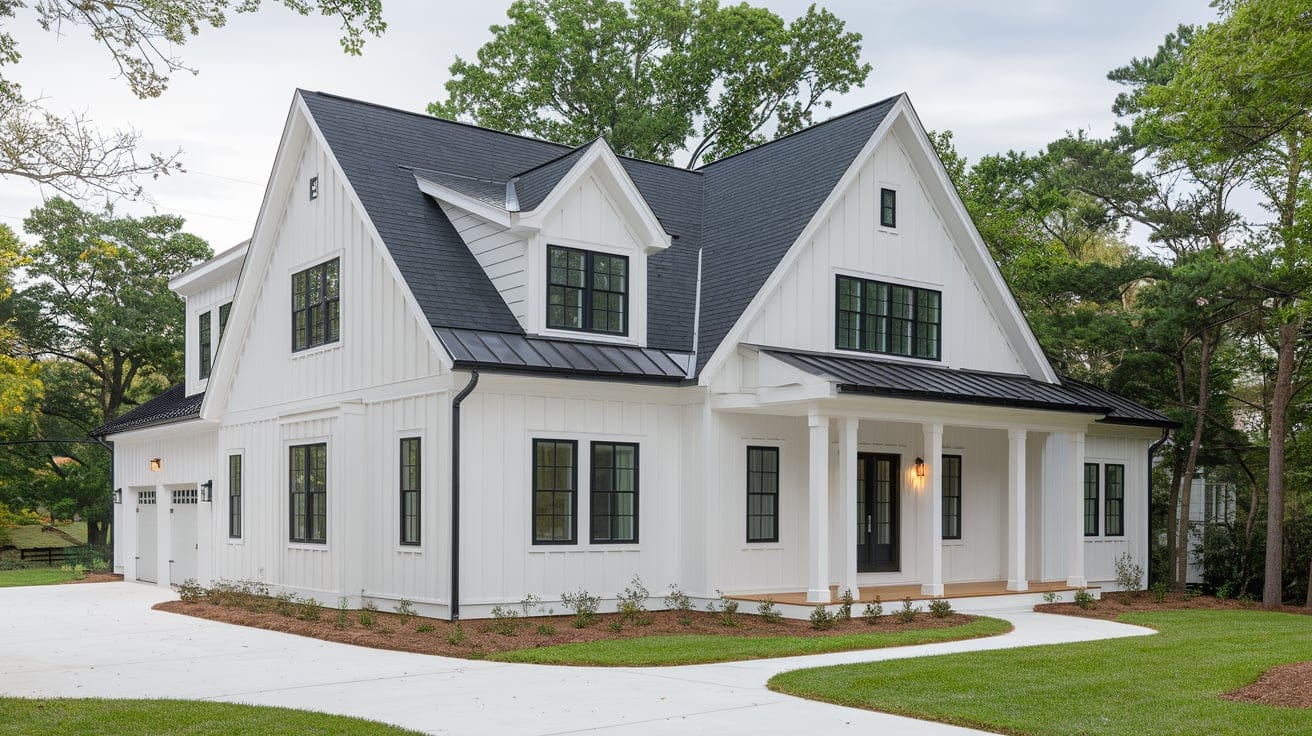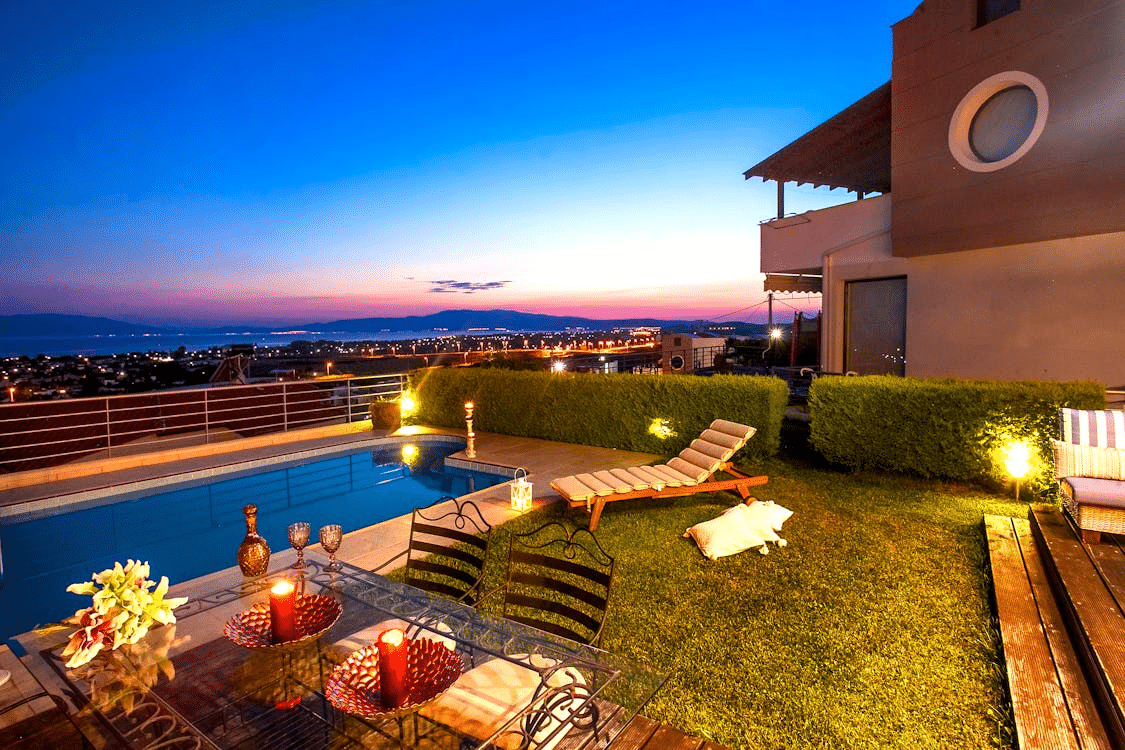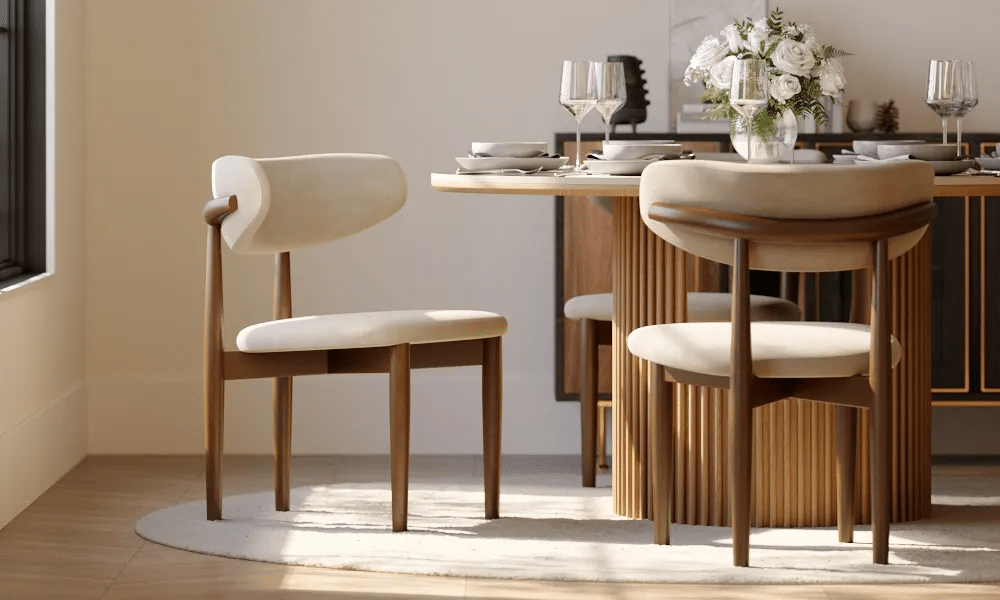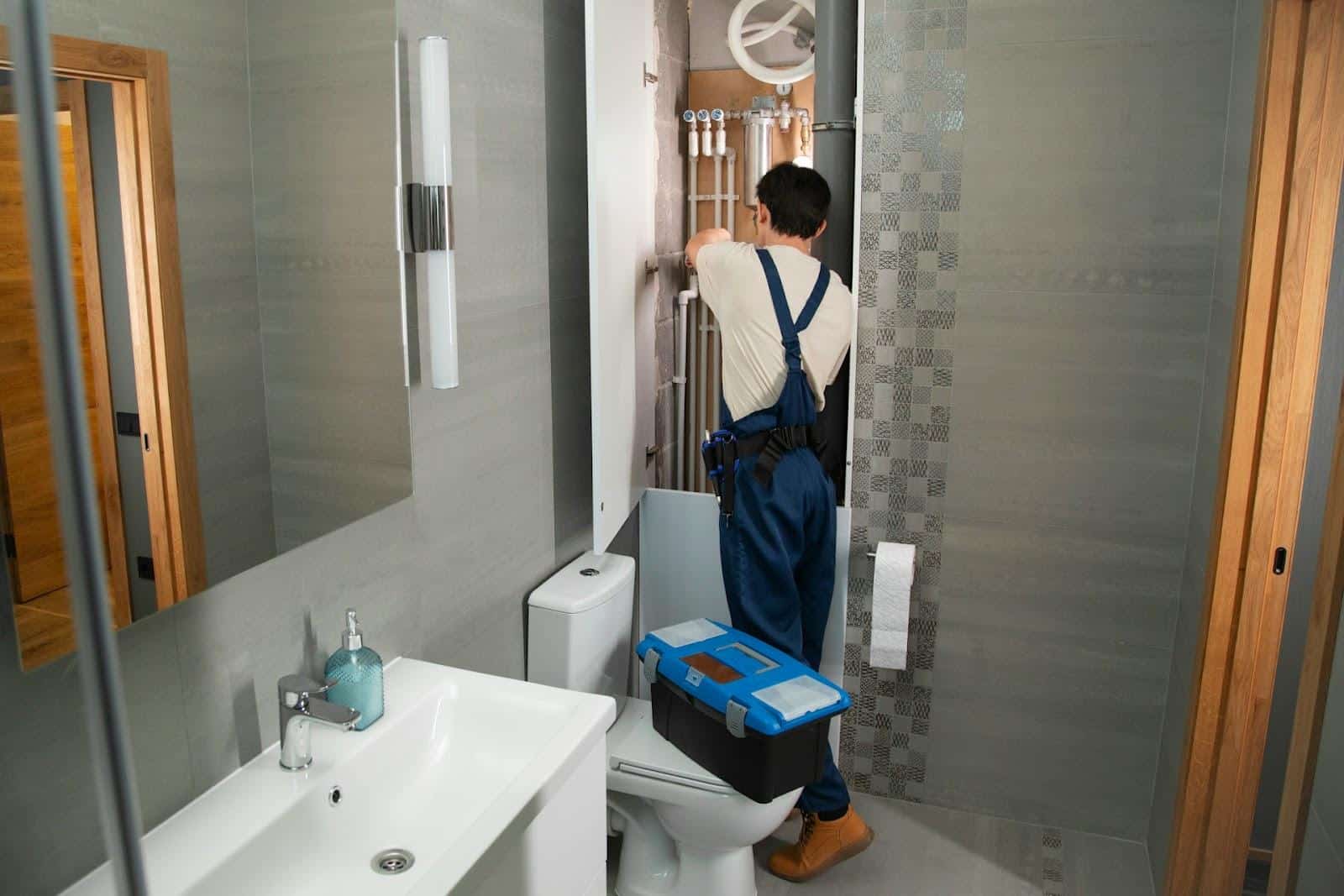Are you drawn to Cape Cod houses but worry they might feel outdated? You’re not alone. These classic homes offer charm and character, but making them work for today’s needs can be tricky.
Good news – Cape Cod homes can blend old-world appeal with modern function. With the right updates, these houses become perfect spots for both family life and entertaining.
This guide will show you how to keep what makes Cape Cods special while adding fresh touches. We’ll cover interior and exterior updates, outdoor living spaces, and planning tips. You’ll learn which original features to keep and which modern additions make sense.
By the end, you’ll have a clear path to a Cape Cod home that honors its roots while meeting your needs today.
Why Modern Cape Cod Homes Are So Popular?
Many people love Cape Cod homes for their clean looks and useful spaces. These houses began as small shelters for fishermen on the coast of Massachusetts. They were built to stand up to harsh weather with their strong, basic shapes.
Today’s Cape Cod homes keep this simple charm but add new touches. The basic form stays the same – a box shape with a steep roof. But now they often have bigger rooms and more windows.
The appeal is clear. Cape Cod homes feel both old and new at once. They mix history with today’s needs for open spaces. Their simple lines match well with today’s wish for less stuff and more purpose.
These homes work well for many types of people. Older folks who want smaller spaces find them just right. Families enjoy their cozy but useful layout. And anyone who dreams of a beach life can feel at home in a Cape, even miles from water.
The small size of many Cape Cod homes also makes them cost less to heat and cool. This helps both your wallet and the earth. Plus, they tend to keep their value over time, making them smart buys.
Key Features of a Cape Cod House (and How to Modernize Them)
Symmetrical Façade → Add Asymmetrical Additions or Large Windows
Old Cape Cod homes almost always had perfect balance. The door sat in the middle with the same number of windows on each side. This made a neat, tidy look that many still love.
To update this look, try adding a wing or bump-out on just one side. This breaks the perfect match but keeps the main shape intact. Big picture windows can also add a fresh touch while letting in more sun.
Pro Tip: Mix old and new by keeping the front door centered but making one side window much larger than the others.
Central Chimney → Replace or Convert to Modern Gas Fireplace
The heart of old Cape Cod homes was often a big brick chimney in the center. This helped warm the whole house in cold winters and gave the roof its peak.
Modern homes don’t need such big heating systems. You can keep the look by adding a gas fireplace that needs only a small vent. Or make the old chimney just for show and hide new heating in the walls.
Some folks keep the old brick but clean and paint it for a fresh look. White brick gives a bright, clean feel while dark colors add drama.
Steep Rooflines → Keep but Accentuate with Contemporary Roofing
The steep roof is maybe the most known part of Cape Cod style. This shape was made to shed snow and make room for beds upstairs.
Don’t change this key shape. Instead, try new roof materials like metal panels or flat tiles. These give a fresh look while keeping the house’s main shape. Black or dark gray roofs look sharp against white walls.
Good roof windows can bring light into upstairs rooms while keeping the roof line clean from the street view.
Small Windows → Expand for More Natural Light
Old Cape Cods had small windows to keep heat in during cold winters. These tiny panes with grids are cute but can make rooms dark.
Make some windows bigger, maybe floor to ceiling in main rooms. This brings in more light and gives views of your yard. You can keep grid patterns on some windows as a nod to the past.
Corner windows are a bold choice that lets even more light in and gives the house a more up-to-date feel.
Pro Tip: Use natural materials like stone or cedar but pair with sleek, matte-black accents. This mix of raw and smooth textures makes a Cape Cod feel both timeless and fresh.
Modern Cape Cod Interior Design Ideas
1. Open Floor Plan
The walls in old Cape Cod homes often cut rooms into small boxes. This worked when heating was hard, but now feels too closed off. Taking down some walls can make the whole main floor feel bigger.
Focus on joining the kitchen to living spaces. This lets the cook talk with family or guests. It also spreads natural light from windows throughout the space.
Keep some walls to maintain the cozy feel Cape Cods are known for. Half walls or wide doorways can define spaces without blocking views.
2. Updated Kitchens
The kitchen is where old meets new in the best way. Shaker-style cabinets honor the simple Cape Cod style while feeling fresh. They work in white, soft gray, or muted blue.
Big islands have become must-haves in Cape Cod kitchens. They offer prep space, casual eating spots, and a place for folks to gather. Top them with marble or quartz for a clean look that lasts.
Open shelves can replace some top cabinets. This makes the room feel more open and gives spots to show off pretty dishes or plants.
3. Bright, Airy Palettes
Light colors make the most of Cape Cod’s often small rooms. White walls bounce light around and make ceilings seem higher. Soft off-whites, pale grays, and light blues all work well.
Add depth with natural items like wood floors, jute rugs, or rattan lights. These bring warmth and texture without making spaces feel dark.
Don’t forget the power of plants. Green leaves pop against neutral walls and add life to any room.
4. Built-ins & Nooks
Small nooks and smart storage help Cape Cod homes feel both homey and useful. Built-in bookshelves around windows or fireplaces add charm while holding books and items.
Window seats make dead space useful. They can hide storage below while giving cozy spots to read or nap. Add cushions in washable fabrics for comfort.
Look for spots to add cabinets in odd corners. Under stairs, around chimneys, or in knee walls upstairs – all can become handy storage space.
Key Consideration: Keep low ceilings cozy by using light tones and recessed lighting. Pendant lights that hang down can make ceilings feel lower, so choose flush mounts where needed.
“If you’re looking for even more ideas on how to mix classic Cape Cod style with fresh, modern updates, this guide on modernizing a Cape Cod house is a great place to start.”
Exterior Upgrades for a Modern Cape Cod Look
Siding Options
The outside skin of your Cape Cod sets its whole mood. Cedar shingles that gray over time give the classic beach house feel. They need little care but do age with grace.
Board-and-batten siding runs up and down, making the house look taller. This style works well in white or dark colors for a more current look.
Some homeowners mix materials for added interest. Try shingles on the main house with smooth panels on a new section.
Modern Trim & Window Styles
Window frames painted black stand out against light walls. This small change makes a big impact on how fresh your Cape Cod looks.
Clean, simple trim looks more current than fussy moldings. Straight lines around doors and windows keep the house looking sharp.
Dormers can be made more modern with less slope and bigger glass. They still serve their job of adding head room upstairs but feel less old-fashioned.
Color Palettes
The right paint can make your Cape Cod house stand out. White remains the top choice, giving a clean base that works in all settings.
For those who want more color, think soft blues that hint at the sea. Sage green ties into yard plants, while warm gray looks smart without being too bold.
Doors and shutters are spots to add deeper color. Navy blue, forest green, or even red can work well as accents.
Roofing Materials
The roof takes up much of what you see on a Cape Cod house. New options like metal panels last longer than old asphalt shingles. They also come in many colors beyond plain black.
Composite shingles can mimic slate or wood but need less care. They stand up to sun and storms well, saving you money over time.
For a green option, some Cape homeowners add solar panels. The steep south-facing roofs work well for catching sun and making power.
Outdoor Living That Complements the Cape Cod Vibe
1. Cozy Front Porches or Deck Extensions
Cape Cod homes gain much from a well-planned front porch. Even a small porch offers a spot to watch the world go by. Add a pair of chairs and a small table for morning coffee or evening drinks.
Deck spaces off the back of the house extend living areas outdoors. They work best when set low to the ground, fitting with the modest scale of the Cape style. Wrap-around deck corners create bonus seating nooks.
Wood decks look best with Cape Cod homes, but new composite boards need less upkeep. Choose tones that match or complement your home’s trim color.
2. Native Plant Landscaping with Modern Edging
Plants that grow naturally in your area need less water and care. For true Cape Cod feel, think beach grasses, hydrangeas, and hardy roses that stand up to wind.
Clean metal or concrete edging gives garden beds a crisp look. This neat border balances the loose, natural feel of native plants and grasses.
Keep plantings close to the house low to show off the clean lines of the Cape Cod shape. Taller plants and trees work better at property edges.
3. Stone Pathways, Outdoor Showers, and Fire Pits
Stone paths with soft edges feel right at home with Cape Cod style. Flat stones set in gravel or sand look casual yet put-together. These paths wear well in all weather and drain rain quickly.
Outdoor showers are must-haves for homes near beaches. A simple wood stall with a shower head brings beach comfort home. Place it near a side door for easy access.
Fire pits extend outdoor time into cool evenings. Choose simple stone rings or metal bowls that sit low to the ground. The best spots are away from the house but still feel connected.
4. Modern Pergolas or Coastal-Inspired Fencing
Pergolas add shade without blocking views or breezes. Simple wood posts with clean lines match the Cape Cod style best. Paint them white to match trim or leave wood natural.
Fences that hint at coastal style include white pickets and natural cedar. For a newer take, try horizontal slats with gaps that let wind pass through.
Don’t fence the whole yard if views are nice. Focus on spots that need privacy or safety, like pool areas or hot tubs.
Pro Tip: Use materials that age well in coastal climates—like teak, gravel, and hardy perennials. These items look better as they weather, saving you time and money on upkeep.
Planning Your Own Modern Cape Cod Home
Renovating vs. Building New
Fixing up an old Cape Cod house keeps its soul intact. You get thick walls, quirky spots, and the story of an old home. But be ready for surprises behind walls and higher costs than first planned.
Building new lets you copy Cape Cod looks while adding today’s needs. New homes can have better insulation, smarter layouts, and fewer headaches. They cost more upfront but less to fix later.
Some choose to start fresh but use old items. Saving doors, windows, or beams from old Capes adds history to new builds.
Budgeting Tips: Where to splurge vs. where to save
Put more money toward items you touch each day. Good doors, cabinet pulls, and faucets make the whole house feel better built. These small upgrades often cost just a bit more but pay off big.
Save on items hidden in walls. Basic wire and pipes work just as well as fancy ones. Put the saved money toward things you see and use.
Windows fall in the middle. Good ones save energy costs but can be very pricey. Look for sales or basic styles with good glass rather than fancy shapes.
Common Mistakes to Avoid When Updating a Cape Cod House
Over-Modernizing and Losing the Charm
Many owners go too far when fixing old Capes. Glass walls and super-sleek kitchens can feel wrong next to old beams and floors. Keep some old parts to tie the house to its past.
Look for ways to add new needs without losing the Cape feel. Hidden TVs, built-in speakers, and smart home wiring can all fit without showing.
If you take something old out, try to put it back in a new way. Old doors can become table tops, and wood from walls can face kitchen islands.
Ignoring Local Climate or Coastal Conditions
Cape Cod homes were built for harsh weather near seas. Don’t forget these needs when you update. Salt air attacks metal parts, so choose hardware that won’t rust.
Storms bring strong winds and rain. Make sure new windows and doors seal tightly and that roofs can stand up to high gusts.
Plant the right kinds of trees and shrubs for your area. Too-tall trees too close to the house can fall in storms and cause big harm.
Skimping on Quality Exterior Materials
The outside of your home faces sun, rain, snow, and wind every day. Cheap siding or roofing will fail quickly and cost more to fix. Buy the best you can afford for these parts.
Paint is your home’s first shield. Good paint costs more but lasts years longer. The same goes for deck stains and wood sealers.
Gutters and downspouts often get the least care but matter most. They keep water away from walls and basements. Choose thick, well-made ones that won’t sag or leak.
Removing All Original Details (like Trim or Shutters)
Old Cape Cod houses have trim styles all their own. Keep these touches around doors and windows when you can. They tell the story of when the house was built.
Working shutters once closed to block storm winds. Even if new ones don’t work, their look ties to the home’s past use. Choose sizes that would truly cover the windows if closed.
Inside, keep some old floors, doors, or built-ins if they’re still in good shape. These links to the past add value and depth to your home.
Conclusion
Cape Cod houses offer the perfect mix of timeless style and modern living when updated thoughtfully. Remember to honor the original spirit of these homes while making them work for today’s needs.
The key is balance—keep the symmetrical shape, steep roof, and cozy feel while opening up spaces where needed. Choose quality materials for the exterior, embrace natural light, and add outdoor living spaces that flow with the home’s character.
Whether you’re renovating an old Cape or building new, focus on what makes these homes special: simplicity, function, and understated beauty.
What Cape Cod features do you love most? Would you rather update an existing Cape or build a new one with modern touches? Share your thoughts in the comments below!
















